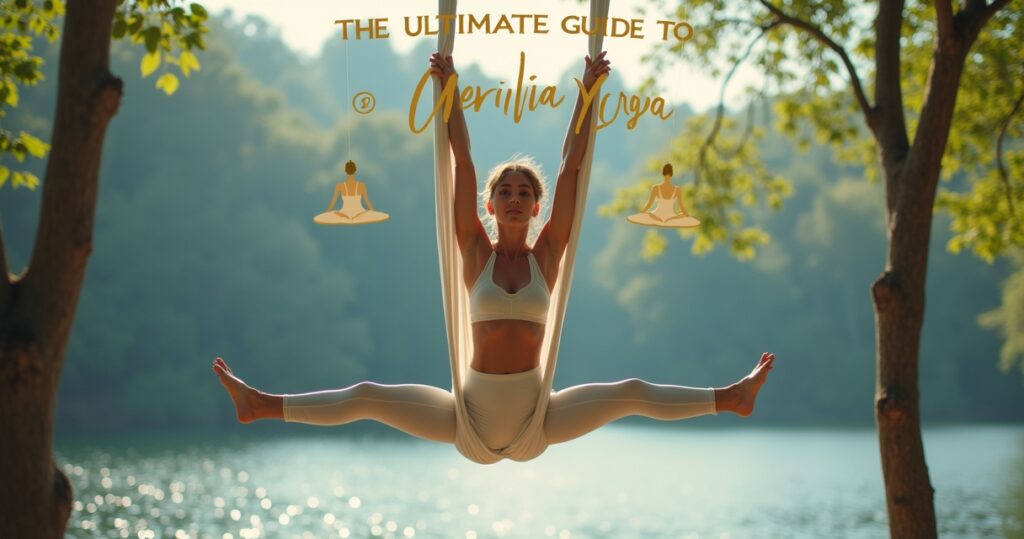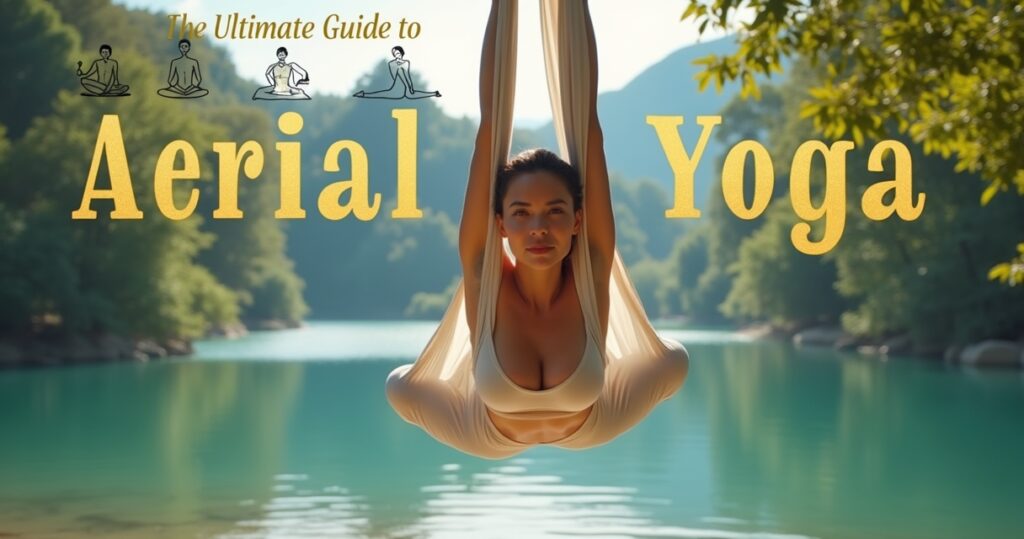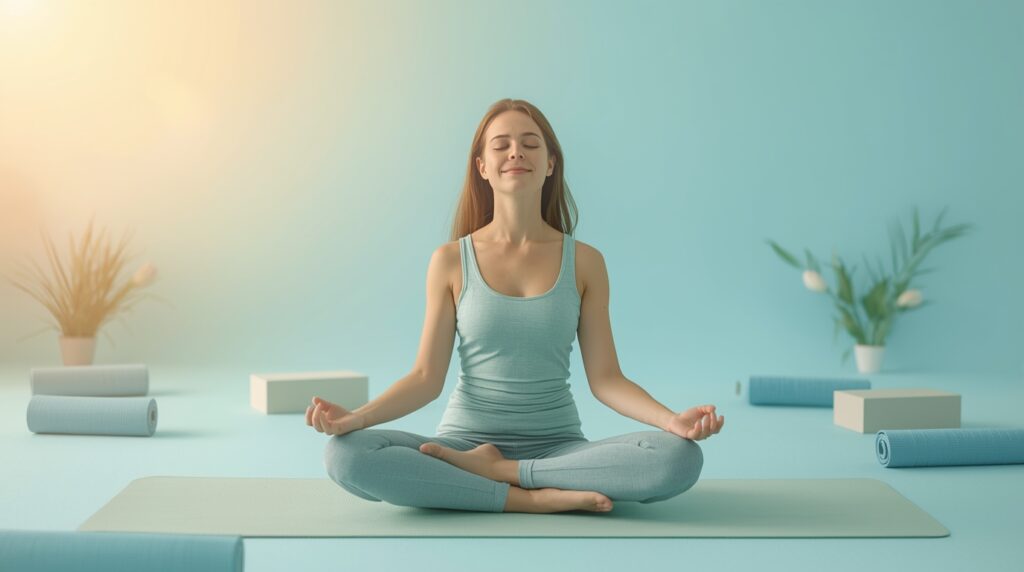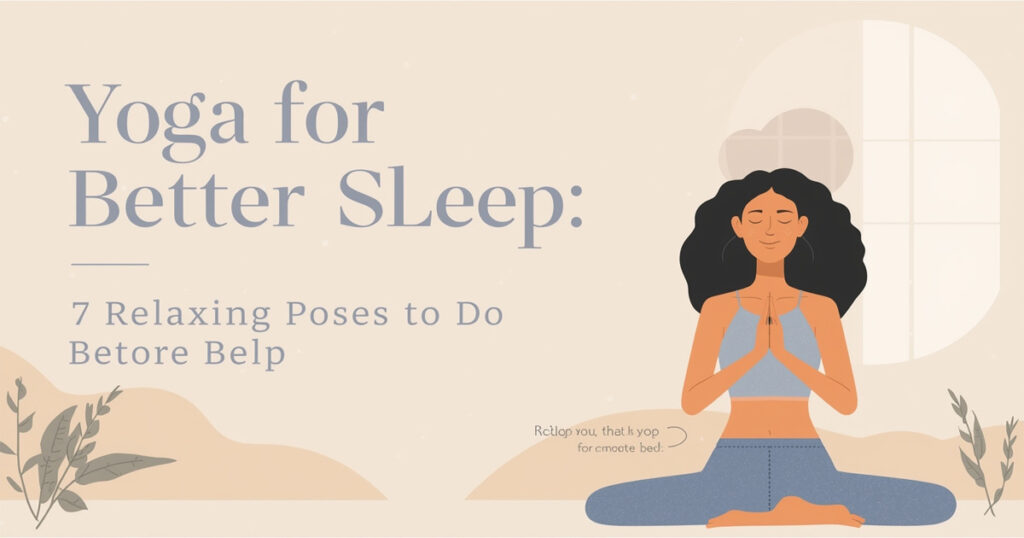Aerial yoga, an exciting variation of traditional yoga, takes your practice to new heights. Using a hammock or silk fabric, you can suspend your body in the air, allowing for a deeper stretch and better alignment while enhancing flexibility and strength. Whether you’re looking to spice up your fitness routine or experience a more advanced level of yoga, aerial yoga offers a thrilling yet accessible way to transform your body and mind.

In this article, we’ll explore the benefits of aerial yoga, the different poses to try, how to get started, and how aerial yoga can help you achieve your fitness goals. Get ready to experience yoga in a whole new way – one that will challenge your limits and make your practice more exciting..
What is Aerial Yoga?
Aerial yoga, also known as anti-gravity yoga, combines traditional yoga with acrobatic movements. The practice involves performing poses using a suspended hammock made of soft fabric, which supports your body and allows you to explore deeper stretches and inversions. It is often compared to trapeze and aerial silks but focuses on mindfulness, balance, and flexibility.
The key difference between traditional yoga and aerial yoga is that the hammock or silk fabric gives you more freedom to move your body in ways you cannot on a mat. This makes aerial yoga an excellent choice for beginners looking to ease into advanced postures while still experiencing the benefits of a traditional yoga session.
Benefits of Aerial Yoga

- Improved Flexibility: The hammock allows you to stretch deeper and hold postures longer, improving your flexibility in both upper and lower body areas.
- Core Strengthening: Aerial yoga poses challenge your core in ways that mat-based yoga cannot. By stabilizing your body while suspended, you engage muscles that are often underused in traditional practices.
- Relieves Pressure on Joints and Spine: Since your body is partially suspended, aerial yoga reduces the strain on your joints and spine, allowing for greater mobility and less discomfort during stretches.
- Increases Strength: Beyond flexibility, aerial yoga strengthens muscles in your arms, legs, and core. Holding poses in the air activates these muscle groups to a higher degree, leading to improved tone and strength.
- Stress Relief and Mental Clarity: Like traditional yoga, aerial yoga encourages mindfulness and breathwork. The unique aspect of suspension creates an environment of relaxation, reducing stress and anxiety while helping you focus.
Essential Aerial Yoga Poses

- Aerial Downward Dog: Similar to the traditional downward dog pose but with your feet in the hammock, this posture helps in stretching the back, hamstrings, and calves. It’s great for releasing tension from the body.
- Aerial Plank: A core-strengthening pose where you hold the hammock with your arms and your feet suspended. It works on your arms, shoulders, and abdominal muscles.
Read More: top-6-yoga-poses-for-beginners
- Aerial Cobra: This pose helps stretch the spine and chest, allowing you to open your body and create a deep backbend, enhancing flexibility.
- Aerial Inversion: Hanging upside down helps relieve spinal compression and improves circulation. It’s also a great way to release built-up tension from the neck and back.
- Aerial Split: A deep stretch for the hamstrings and hips, this pose improves flexibility and helps in lengthening the lower body.
How to Get Started with Aerial Yoga

Getting started with aerial yoga doesn’t require previous acrobatic experience. Here’s how you can begin:
- Find a Reputable Studio: Look for a studio that offers aerial yoga classes and certified instructors. Make sure the equipment is of high quality and properly maintained.
- Wear Comfortable Clothing: Choose tight-fitting clothes that won’t get caught in the hammock, such as leggings and a fitted top.
- Prepare Your Body: Although aerial yoga is beginner-friendly, it’s recommended that you have some experience with traditional yoga or basic fitness, as this will help you adapt quickly.
- Start Slow: Begin with simple poses and gradually work your way up to more advanced ones. Listen to your body and take breaks as needed.
- Have Fun: Remember, aerial yoga is about enjoying the process, so don’t be afraid to laugh and have fun while you practice!
Conclusion
Aerial yoga is a fun, challenging, and beneficial practice that combines the best of traditional yoga with acrobatic elements. It improves flexibility, strengthens muscles, relieves stress, and increases mindfulness. Whether you’re looking for a new way to challenge your body or simply want to try something exciting, aerial yoga offers something for everyone. Take the leap and discover how suspended yoga can elevate your fitness routine and mental well-being.
Image Description: Aerial yoga poses performed with a suspended hammock to improve flexibility, strength, and mental clarity.
Frequently Asked Questions (FAQ) About Aerial Yoga
1. What is aerial yoga?
Aerial yoga is a unique fusion of yoga and acrobatic elements where you perform yoga poses while being supported by a suspended hammock. It helps improve flexibility, strength, and posture by allowing you to perform stretches and inversions that are difficult to achieve on the floor.
2. Is aerial yoga suitable for beginners?
Yes, aerial yoga is beginner-friendly, as long as you follow the guidance of a certified instructor. Start with basic poses and gradually build your way up. The hammock will provide support, making it easier for you to hold positions and build strength.
3. What are the benefits of aerial yoga?
Aerial yoga offers numerous benefits, including improved flexibility, core strength, and muscle tone. It also reduces stress, alleviates back pain, and improves posture. The hammock supports your body, reducing strain on your joints and spine.
4. Do I need previous yoga experience to try aerial yoga?
While previous yoga experience can be helpful, it is not necessary to try aerial yoga. Basic fitness or an open mindset to try something new is enough to get started. However, a beginner’s yoga class might help you feel more comfortable in the basic poses.
5. How do I get started with aerial yoga?
To get started, find a certified aerial yoga studio with proper equipment. Wear comfortable, form-fitting clothing, and ensure the hammock is properly adjusted for your body size. Most importantly, start slow, follow instructor instructions, and have fun!
6. Can I do aerial yoga at home?
Yes, it is possible to practice aerial yoga at home if you have the right equipment. You will need a sturdy aerial yoga hammock and space with enough clearance to safely hang the hammock. It’s highly recommended to take classes first and learn proper techniques before practicing at home.
7. How often should I practice aerial yoga?
For optimal results, practicing aerial yoga 2–3 times a week is ideal. This allows you to build strength and flexibility while giving your body enough time to recover between sessions. Be sure to listen to your body and take rest days if needed.
8. Will aerial yoga help me lose weight?
Aerial yoga can be part of a weight loss regimen. It improves muscle tone, builds strength, and burns calories. However, to lose weight, it should be paired with a healthy diet and a balanced workout routine.
9. Is aerial yoga safe?
Aerial yoga is generally safe when practiced correctly under the supervision of a certified instructor. Always ensure your hammock is properly set up, and don’t push yourself beyond your limits. If you have any medical conditions, consult your doctor before starting.




